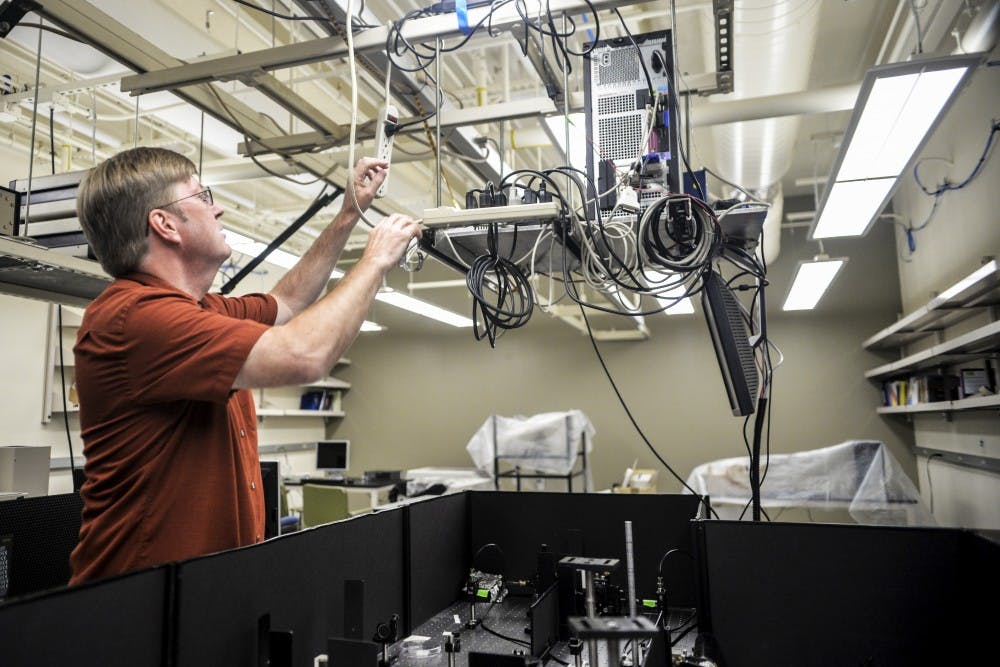UNM is inventing a new way to store and access data that could render CD’s and conventional computer hard drives obsolete.
The goal of the research, headed by chemistry Professor Jeff Rack and funded by the National Science Foundation and the W.M. Keck Foundation, is to have lasers read data in 3-D space.
This is in contrast with CD’s, hard-drive disks and other conventional methods of data storage, which rely on 2-D surfaces for data transcription.
Rack’s idea is to create data storage within a volume of material, analogous to a digital pancake full of information, he said. Instead of being able to read just the top of the pancake (like a CD or hard drive), new 3-D data storage technology would allow users to fill the entire pancake with information.
Changing data storage techniques from surface area to volume would allow for terabytes more storage per device, and the implications of such a technologies are still unknown, Rack said.
“If you write in a different format and use a non-linear optical technique you can access volume. If you can access volume, then you can greatly increase data storage in the same material," he said. "So, instead of using just the area, we can then use the volume and go to terabytes. But the trick is generating this material.”
There are two critical parts to creating 3-D data storage.
First, the device needs a laser that reads and records information in three dimensions. Second, the device needs to have a medium or material in which data is stored.
Rack said laser technology in the last 15 years has become capable of reading and writing data in a 3-D environment, but the appropriate medium by which to do so has yet to be developed.
This is where chemistry and Rack's expertise in electronic and photonic materials comes in handy.
Along with a team of three students Rack is studying photonic materials; that is, materials which change their chemistry upon exposure to light (photons).
Specifically, Rack said he is interested in photochromic materials: molecules that undergo a reversible, light-induced change in color.
Get content from The Daily Lobo delivered to your inbox
“The optics and the photonics for how to write and store information in three dimensions are well known, but where we are lacking is in the development of materials. So this is sort of a material chemistry problem," he said. "How do we design new materials to generate this effect?”
Rack said we can understand the concept of 3-D data storage through the analogy of a photochromic or "transitional" lens, which changes color based on the amount of ultraviolet light that it absorbs.
For example, while indoors, a transitional lens is clear, but when exposed to the UV present in sunlight the lens becomes darker, he said. The difference in lens shade between clear and dark is similar to binary language in computers.
In Rack’s data storage vision, the photochromic material will be changing not only in response to UV but also in response to multiple light frequencies generated by lasers.
To make his job harder, not only does Rack need a material that responds predictably, he needs it to be stable at room temperature.
Currently, Rack is working with other researchers in Japan, Germany and the U.S. to create the photochromic material that fits their criteria for a viable three-dimensional data storage medium.
Furtherj, Rack said he is studying how different polymers react with molecules.
A current obstacle has been the lack of scientific instruments capable of measuring specific changes in polymers, Rack said, and that it was a frontier in instrument development.
The next step for Rack and his research team is to refine their instruments and continue synthesizing new materials.






